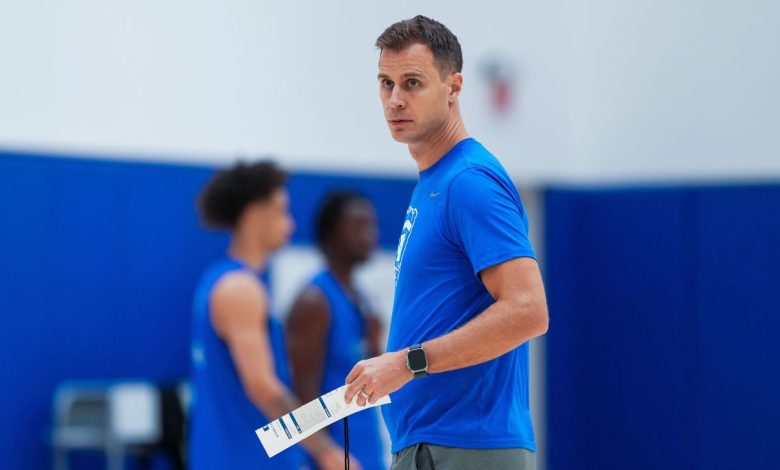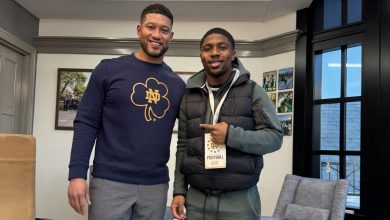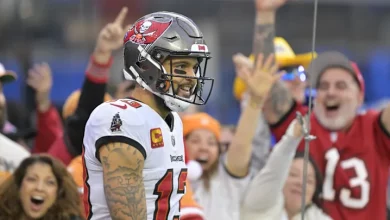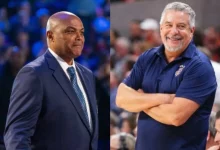Jon Scheyer strategically reloaded Duke’s roster by recruiting top high school prospects, developing existing players, and balancing experience with youth after NBA Draft departures.

The Duke Blue Devils, an iconic program in college basketball, have long been distinguished by their ability to blend top-tier recruiting with player development, maintaining a competitive edge year after year. The 2022-2023 season marked a transitional period for Duke, marked by the graduation and NBA Draft departures of several prominent players, including Paolo Banchero, Wendell Moore Jr., Mark Williams, and others. These departures posed a significant challenge for Jon Scheyer, the newly appointed head coach, who inherited a roster looking to sustain Duke’s excellence amid a changing landscape.
In this context, Scheyer’s approach to rebuilding Duke’s roster exemplifies strategic planning, talent evaluation, and adaptability. His efforts focused on recruiting top high school prospects, developing returning players, and establishing a balance between experienced veterans and promising youth. This comprehensive strategy aimed to ensure Duke remained competitive both immediately and in the long term.
This analysis explores how Jon Scheyer executed this rebuilding process, highlighting his recruitment philosophy, player development initiatives, and roster management tactics that collectively positioned Duke for success in a highly competitive environment.
Context: The Challenges Facing Duke Post-Departures
Before delving into Scheyer’s rebuilding strategy, it’s essential to understand the landscape he faced:
- Significant Player Losses: The 2022 NBA Draft saw Duke lose key contributors like Paolo Banchero, the No. 1 overall pick, Wendell Moore Jr., and Mark Williams. Their exits created gaps in scoring, leadership, and experience.
- High Expectations: Duke’s reputation as a perennial NCAA powerhouse meant that mediocrity was not acceptable; the program needed to reload quickly.
- Changing NCAA Recruiting Dynamics: The transfer portal and NIL (Name, Image, Likeness) opportunities had reshaped recruiting, requiring Scheyer to adapt his approach to roster construction.
- Transition in Coaching Leadership: As a relatively new head coach, Scheyer needed to establish credibility while implementing his vision.
Against this backdrop, Scheyer’s strategy focused on leveraging Duke’s recruiting strength, developing existing talent, and fostering a culture of adaptability.
Recruiting Top High School Prospects: Building the Foundation
One of Scheyer’s primary strategies was aggressive recruiting of high school prospects, targeting elite athletes who could immediately contribute or develop into key players.
Prioritizing Top-Tier Talent
Recognizing that immediate talent was essential to fill the void left by NBA-bound stars, Scheyer and his staff prioritized recruiting players with high upside and proven track records. Notable additions included:
- Dariq Whitehead: A highly-rated wing from Montverde Academy, Whitehead brought versatility, length, and scoring ability, with the potential to develop into a primary offensive option.
- Kyle Filipowski: A skilled big man, Filipowski’s ability to stretch the floor and handle the ball made him an immediate impact player.
- Mark Mitchell: An athletic wing with defensive versatility, Mitchell added depth and defensive toughness.
- Tyrese Proctor: An Australian guard with excellent court vision, Proctor provided playmaking and leadership.
Recruitment Philosophy
Scheyer’s recruitment approach centered on several key principles:
- Development of Character and Culture: Beyond talent, Scheyer emphasized players’ work ethic, basketball IQ, and fit within Duke’s culture.
- Versatility and Basketball IQ: He sought multi-dimensional players capable of playing multiple positions and adapting to various systems.
- Long-Term Potential: While immediate impact was a priority, Scheyer also focused on players’ growth trajectories, aiming for sustainable success.
Utilizing Duke’s Recruiting Advantages
Duke’s storied history, brand recognition, and connections in the basketball world provided advantages in attracting top talent. Scheyer capitalized on these assets by emphasizing Duke’s academic excellence, basketball tradition, and player development track record.
Developing Existing Players: Cultivating a Cohesive Team
While recruiting played a vital role, Scheyer also focused heavily on developing the returning roster members and integrating new players seamlessly.
Fast-Tracking Player Development
- Skill Enhancement: Scheyer and his staff prioritized refining players’ offensive and defensive skills, emphasizing shooting, ball-handling, and defensive positioning.
- Leadership and Confidence: Building leadership qualities among returning players was crucial, especially in a transitional year.
- Playing Style Adaptation: Scheyer’s system emphasized spacing, ball movement, and aggressive defense, requiring players to adapt quickly.
Empowering Youth and Experience
- Leadership Roles: Younger players were given responsibilities to foster ownership and confidence.
- Mentorship and Culture Building: Scheyer cultivated a culture of accountability, resilience, and teamwork, which helped integrate new players into Duke’s tradition.
Emphasizing Versatility and Basketball IQ
Developing multi-skilled players allowed Scheyer to implement a flexible system that could adjust based on personnel. This approach also maximized the talent of returning players and made the team more adaptable.
Strategic Roster Management: Balancing Experience and Youth
Effective roster management was essential for maintaining competitiveness while nurturing future stars.
Transfer Portal and NIL Opportunities
Scheyer utilized the transfer portal to fill specific needs, adding experienced players who could contribute immediately and provide leadership.
Depth and Flexibility
By recruiting multiple versatile players and developing existing ones, Scheyer built a roster with positional flexibility, enabling tactical adjustments during games.
Managing Expectations and Team Chemistry
He prioritized fostering chemistry and resilience, understanding that a cohesive team could outperform individual talent.
Emphasizing a Defensive Identity and Modern Offense
A critical component of Scheyer’s rebuilding was establishing a distinct identity.
Defensive Focus
He emphasized intense, disciplined defense, which often serves as the backbone for successful teams, especially those integrating young players.
Modern, Spacing-Oriented Offense
Scheyer’s offensive philosophy centered on spacing, ball movement, and outside shooting, aligning with contemporary basketball trends and maximizing the skills of his versatile roster.
Results and Outlook
Under Scheyer’s leadership, Duke’s roster transformation yielded promising results:
- Competitive Performance: The team demonstrated resilience, competitive spirit, and adaptability.
- Player Growth: Younger players gained valuable experience, setting the stage for future seasons.
- Recruiting Momentum: Success on the court bolstered recruiting efforts, attracting top prospects for subsequent years.
While challenges remain, such as integrating new talent quickly and competing with seasoned programs, Scheyer’s strategic approach has positioned Duke to remain a formidable force in college basketball.
Jon Scheyer’s strategic rebuilding of Duke basketball’s roster after the NBA Draft departures exemplifies a comprehensive, forward-thinking approach. By aggressively recruiting top high school prospects, emphasizing player development, and balancing experience with youth, Scheyer has crafted a roster capable of competing at the highest level.
His focus on versatility, culture, and identity has allowed Duke to adapt to a rapidly changing college basketball landscape. Though the process is ongoing, the foundation has been laid for sustained success, and Scheyer’s leadership signals a new era for the Blue Devils—one rooted in strategic vision, talent development, and a commitment to excellence.









